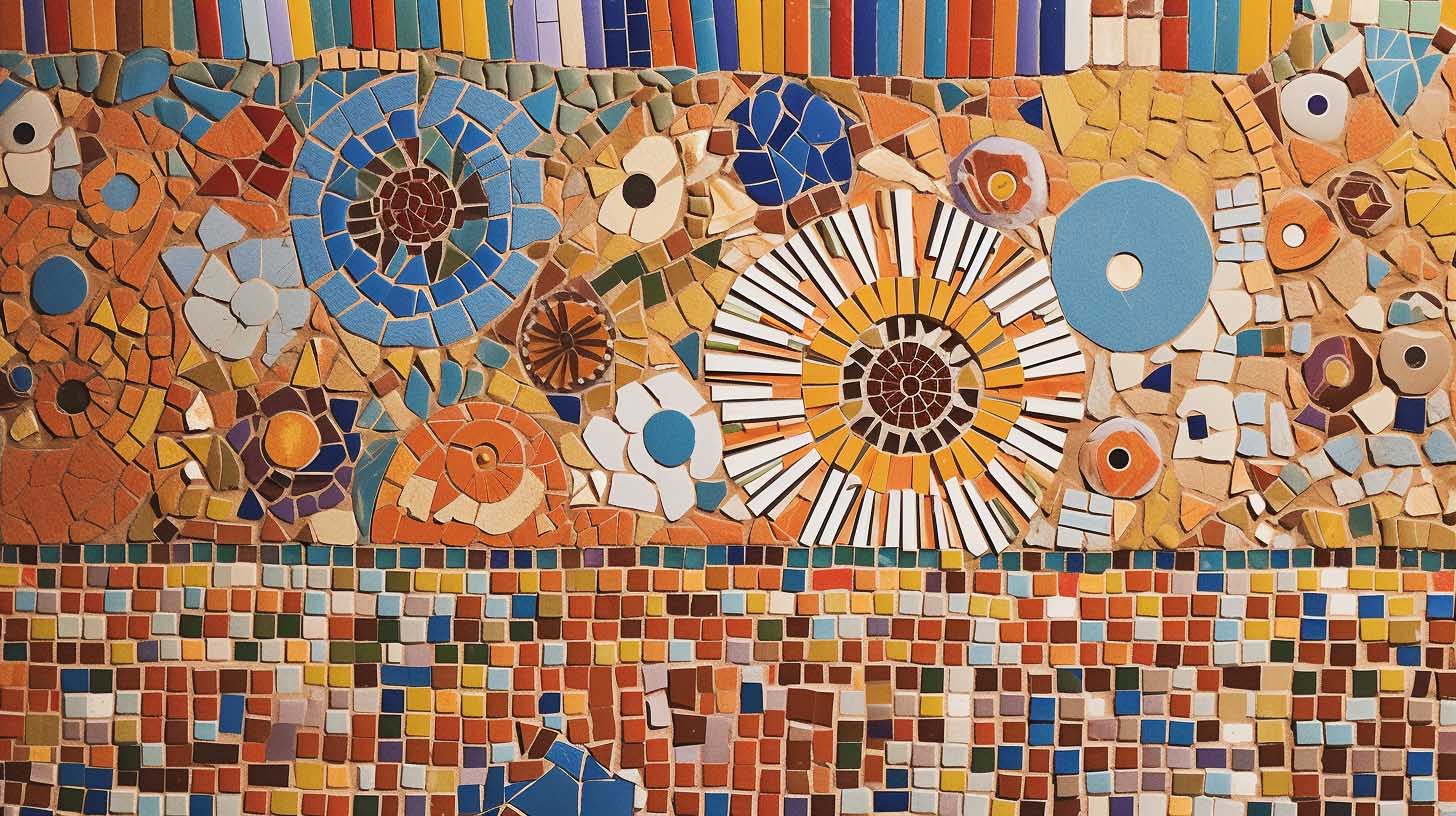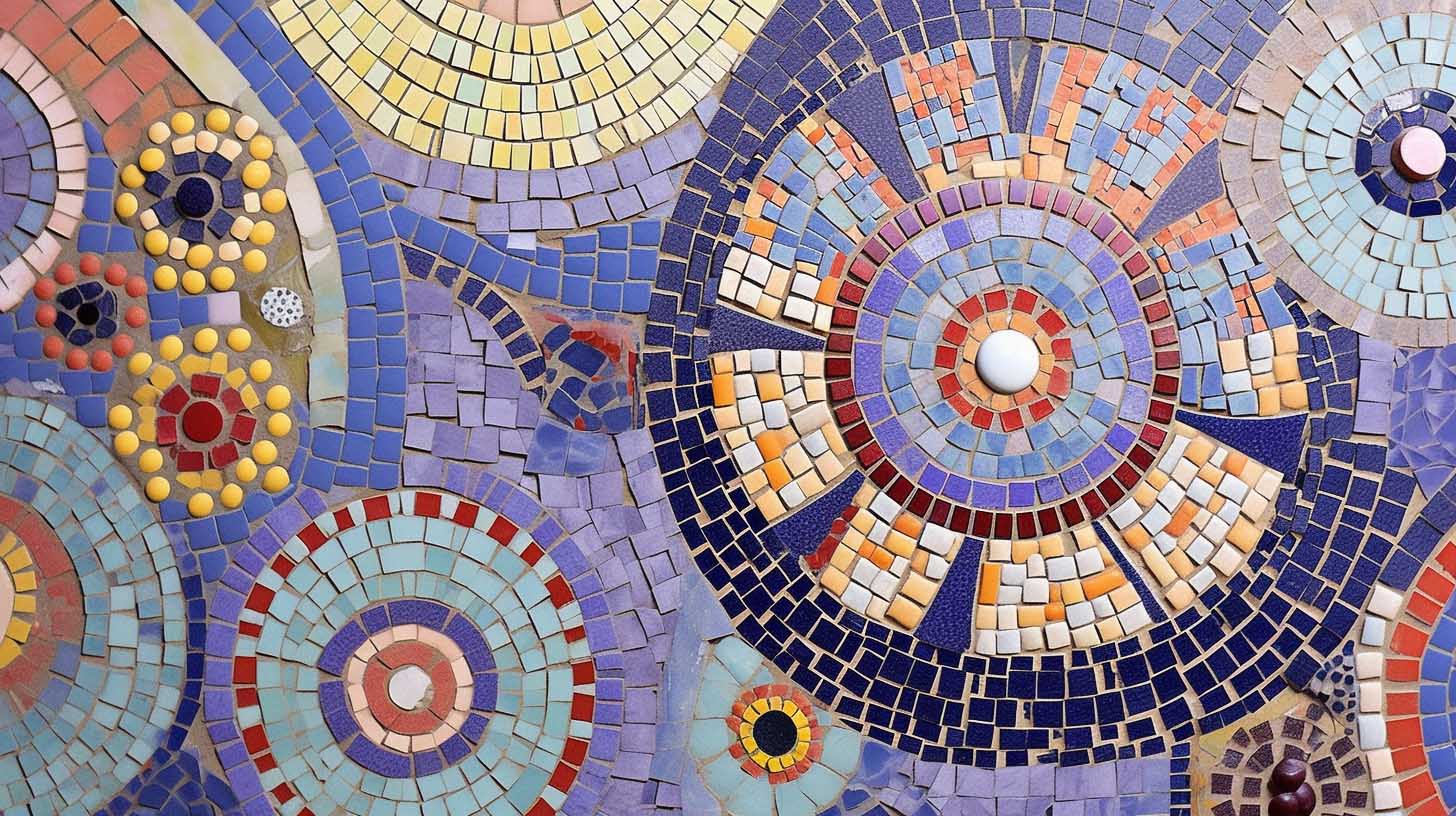Mosaics are a form of art that have been around for centuries, and they are still popular today. Creating a mosaic can be a fun and creative way to add a unique touch to any room in your home.
The process of creating a mosaic can be daunting, however, as it involves selecting the right tile, cutting and fitting it into place, and finding the right adhesives and grouts. This article will provide a comprehensive guide to the process of creating a mosaic, from preparing the area to the finishing touches.
It will also provide tips on how to choose the right tile and how to ensure that the mosaic is properly fitted and sealed. By the end of this article, readers will be able to create their own unique and beautiful mosaic tile projects for any room in their home.

- Creating a mosaic can add a unique touch to any room in your home
- Choosing the right tile involves considering factors such as color, texture, and sizing
- Cutting and fitting the tile is a critical step that requires careful measuring and planning
- Adding accents can create an artistic display and make the project stand out
Preparing the area is a crucial step in creating a mosaic tile project, as it will ensure a successful outcome of the project.
Picking a pattern and selecting colors are essential elements of the preparation and should be done carefully, as they will influence the project's overall aesthetics.
Choosing the right tile involves considering factors such as color, texture, and sizing, and should be done with an eye for detail.
With a thoughtful approach to the preparation process, a successful and aesthetically pleasing outcome can be achieved.
Selecting the proper tile is essential for creating a successful mosaic tile project.
When choosing tile, the first step is to consider mixing colors to create a design that is aesthetically pleasing. Colors should be chosen carefully to ensure the overall effect is pleasing and not too overpowering.
Once the colors have been selected, it is important to choose the right shapes for the mosaic. Shapes can be square, rectangular, triangular, or any other shape that will fit together in the overall design. Careful consideration should be given to the shapes used to ensure that the finished product is balanced and visually appealing.
Different combinations of colors and shapes can be used to create unique and eye-catching designs. By carefully considering the colors and shapes used in the project, it is possible to create a stunning mosaic tile project that will be admired and enjoyed for years to come.
With the right combination of colors and shapes, it is possible to create a beautiful mosaic that reflects the creativity of the artist. Cutting and fitting the tile is the next step in the process.

Cutting and fitting the tile is the most critical step in creating a successful mosaic tile project. Careful measuring and planning should be done before beginning to cut tiles.
Installing frames and measuring tiles will help ensure that the project will fit the desired space. It is important to take time to measure and cut the tiles precisely as this will give the best results. Any tiles that are cut too small or too large could ruin the overall look of the project.
To ensure accuracy when cutting tiles, it is best to use a tile cutter, which is a special tool specifically designed for this purpose. Once the tiles are cut, they must be fitted into the frames. This process may require some trial and error in order to make sure that the tiles fit together properly.
Once the tiles are cut and fitted, the next step is to begin adhering them to the surface. This process requires the use of adhesives and grouts to ensure a secure and lasting installation.
Adhering the tiles to the surface requires the use of specialized adhesives and grouts to ensure a secure and lasting installation. Different adhesive types can be used for different materials, such as thinset for porous surfaces or epoxy for non-porous surfaces. Grouts are also an important factor, as they provide extra protection against water and prevent sealing issues.
Additionally, they can also be used to enhance the aesthetic effect of a project by adding color and texture. An innovative approach to grouts would be to use colored grouts to create a bold color statement, or to combine different grouts to generate a unique pattern.
Overall, choosing the right adhesive and grout is essential to create a successful mosaic tile project. As such, the selection of the appropriate materials should be considered carefully to guarantee the desired results.
To complete the project, the next step is to add the finishing touches.
The final step of a mosaic tile project is to add the finishing touches. This is a crucial part of the project, as it is when the artist can truly express themselves.
Adding accents to the mosaic tile project is a way to create an artistic display that will make the project stand out. Accents can be used to add a subtle, yet noticeable contrast to the mosaic tile project, bringing out its unique beauty.
It can also be used to add more character to the project, giving it a unique aesthetic that can't be replicated anywhere else. Other elements, such as texture or color, can also be used to create an eye-catching display. Using these elements in combination can create an artwork that is unique and eye-catching.

When determining the size of a mosaic tile project, it is important to plan the layout carefully and choose the right grout. Consider the size of the space and the desired aesthetic, then measure and mark the area for a precise installation. Also take into account the complexity of the pattern and the skill level of the installer. With the right planning, a beautiful and unique mosaic tile project can be created.
Cutting and fitting the tile for a mosaic tile project requires special tools. These tools include grouting techniques, adhesive types, tile nippers, and tile cutters. Crafting each tile with precision requires knowledge of each tool and its particular application. With the right tools and techniques, creating a beautiful mosaic tile project is possible.
The best way to ensure tiles stay in place is to select appropriate grouting and adhesives. Careful consideration should be taken when choosing the type of adhesive, as well as the grouting techniques used to secure the tiles. A combination of these two will provide a secure foundation that will last for years.
When working with mosaic tiles, it is important to choose high-quality materials and wear protective gear such as goggles, gloves, and a dust mask. Additionally, take precautionary measures to reduce the risk of cuts and abrasions. By utilizing safety protocols, one can explore the creative potential of mosaic tiles with confidence.
When mixing and matching different tiles, careful planning of the layout and mindful selection of colors are essential for achieving the best results. Pay attention to the tones and shades of the tiles, and consider how they will interact when placed together. Visualizing the mosaic beforehand can help you decide which colors to use.
The use of mosaic tiles can bring a unique and elegant look to any home.
To ensure the best results, it is important to prepare the area, choose the right tile, and install it properly.
Cutting and fitting the tile can be achieved with the help of appropriate tools and should be done with care.
Adhesives and grouts are necessary for a successful installation and should be chosen with the same attention to detail.
Lastly, it is important to pay attention to the finishing touches to ensure the mosaic tiles look their best.
With some creativity and attention to detail, mosaic tiles can be used to create a beautiful and unique look in any room.